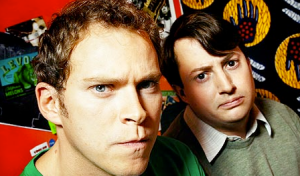1. SITES WITH VIDEO ARE LISTED HIGHER IN NATURAL SEARCH THAN SITES WITHOUT VIDEO (AND SITES WITH MORE VIDEO ARE LISTED EVEN HIGHER!)
The chances are that all too often you’ve clicked on a link to a website that’s ranked in the top 3 in Google only for it to have nothing whatsoever to do with what you searched for. That’s because until a few years ago Google worked out its rankings largely by finding key words embedded within a website and by the amount of links to a certain site from other websites. But the Google boffins realised that keywords and links are at the mercy of evil spammers and internet ‘bots’. This meant that sites that had some devious computer programmers working on them but had nothing much to do with the search term entered could get right to the top of the Google rankings. This was a massive problem that needed fixing. So in May 2007 Google launched its ‘Universal Search Initiative’ to integrate listings from its news, video, images, local and book search engines into Google SERP (Search engine result page). This is a big departure and is changing the way that search engine optimisation works.
Now the world’s biggest search engine will focus on traffic and above all how media rich a site is to determine its place in the rankings.
The richest of all media is video. Hence video is consequently the type of media Google likes best and features the most (the incredibly costly acquisition of youtube by google proves there’s 1.65 billion reasons why video is so important to Google’s future). According to research by Emarketer 38% of all Google searches in 2008 were served video and it’s going up fast. Having pictures on your site can help a little, but the effect of adding video is dramatic.
Renowned US search engine optimisation specialist Bruce Clay (bruceclay.com) has gone on record to say that if the top ten sites in any search don’t have video and their rivals do, they could lose their ranking overnight.
2. YOUR SITE STANDS OUT MORE
When Google lists a site that it recognises includes video it will publish a little thumbnail image of the video next to that site’s listing. Sites that don’t contain video never get this thumbnail. Thumbnails have tremendous power to draw the eye on an otherwise bland set of google results. They are proven to attract clicks, even if you’re lower down the list. So the more clicks you get the more traffic you get and the higher up the google rankings you go.
3. YOU GET MORE HITS
Videos generate interest buzz, inbound links and website traffic which again increases rankings.
4. YOU CAN GET MULTIPLE GOOGLE LISTINGS
By posting your videos to video sharing websites like youtube and vimeo you can get listed for every site you’ve uploaded your video to (of which there are hundreds). Naturally all these videos will have a link back to your site meaning that a good video can potentially monopolise the top ten (or top 100!) listings on google.
Here’s an article about how a guy’s blog wasn’t showing up on the first page of google, but by embedding video into his blog and seeding that video out to video sharing sites he had 7 of the top 10 google listings a week later.
5. YOU’LL BE LISTED IN THE VIDEO RANKINGS
Increasingly people are becoming aware that the video search function on google returns a handful of high quality videos whilst the main google search often returns hundreds of thousands of bamboozling web pages. Modern web users know that the video content listed will almost always be specific to their search and will most probably be more fun to view than a boring text-only web page. Why trawl through hundreds of inaccurate pages when you can choose from a few accurate and specific videos?
It’s obvious but if you don’t have a video you can’t get listed on Google video search, denying your site the opportunity to be found in this increasingly popular search destination.
Watch this for more details.



 Posted by trin0580
Posted by trin0580 

